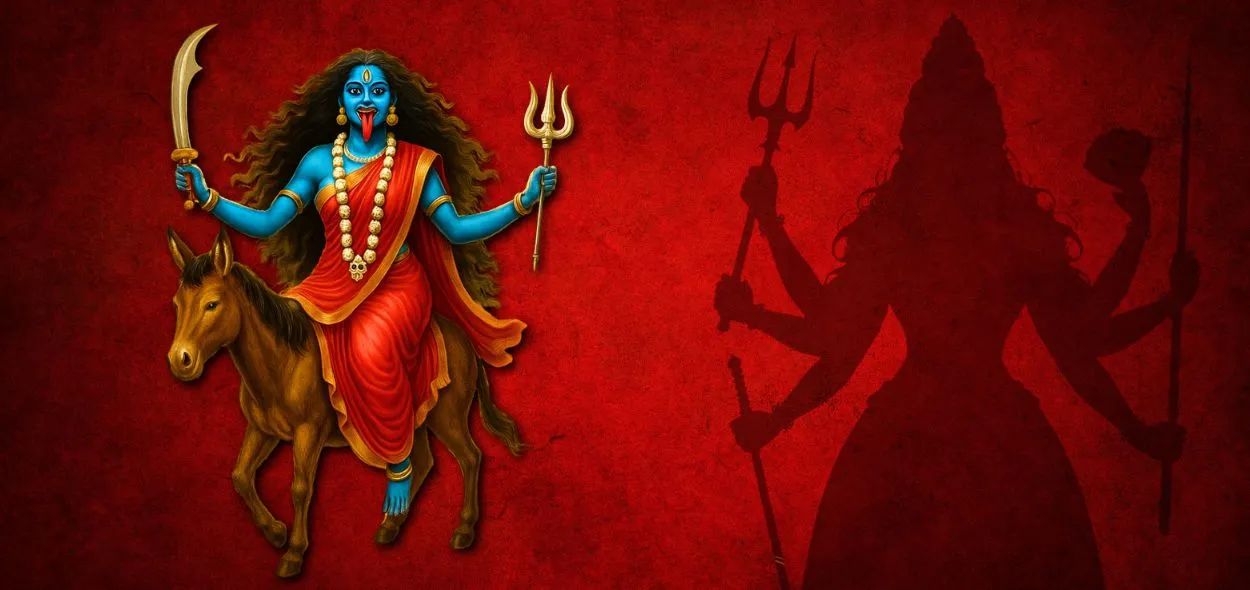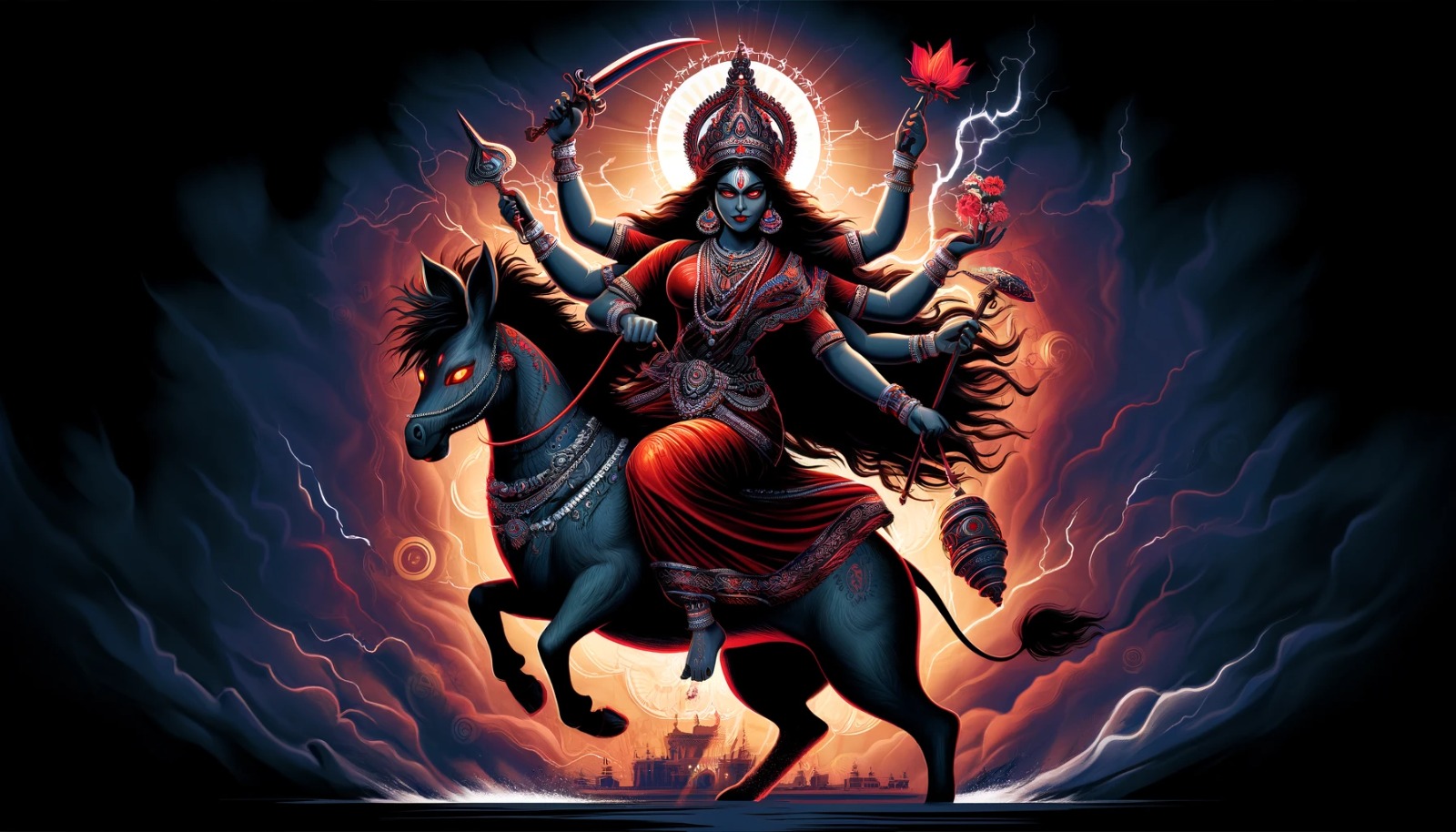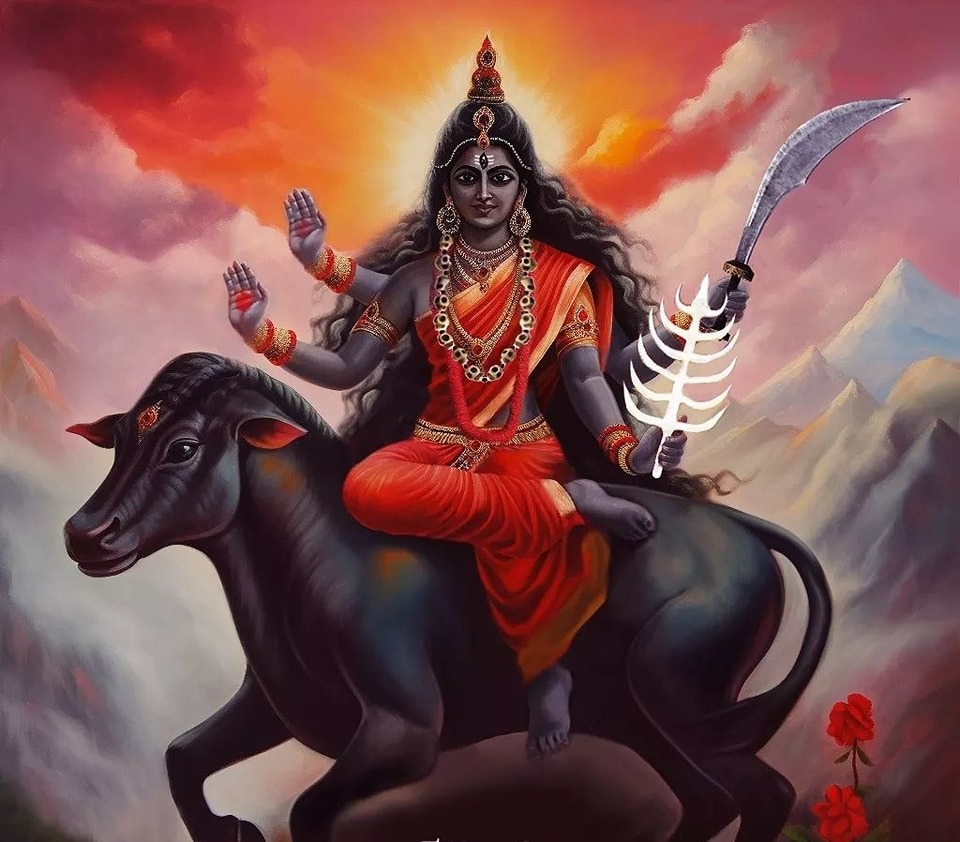
Vidushi Gaur/ New Delhi
Navratri, the nine-night festival dedicated to the worship of Goddess Durga and her nine forms, is celebrated with devotion, discipline, and cultural fervour across India. Each day honours a distinct manifestation of Shakti, the divine feminine energy, revealing her multiple dimensions, from nurturing to protective, serene to fierce. The seventh day of Navratri, known as Maha Saptami, is dedicated to Goddess Kalaratri, one of the fiercest and most awe-inspiring forms of Durga.
The Mythological Origins of Goddess Kalaratri
The name Kalaratri translates to “the dark night” or “the night of death.” She is believed to be the most ferocious form of the goddess, invoked to destroy demons and evil forces that threaten the balance of the universe.

According to the Devi Mahatmya and other Puranic texts, when the demons Shumbha and Nishumbha waged war against the gods, Durga assumed multiple terrifying forms to vanquish their armies. Out of her forehead emerged Kalaratri, dark-skinned, with dishevelled hair, three blood-red eyes, and a necklace of thunderbolts. Flames are said to burst from her breath, and she rides a donkey, carrying a sword and an iron hook. Her very presence instils terror in demons but reassures her devotees of protection.

Legends also associate her with the slaying of the demon Raktabeej, who had the power to reproduce from every drop of his blood that fell to the ground. To defeat him, Kalaratri spread her tongue across the battlefield, drinking his blood before it could touch the earth. Through her ferocity, she annihilated him, ensuring cosmic order and peace.
Though her form is terrifying, Kalaratri’s essence is benevolent. She destroys negativity, ignorance, and fear, making way for wisdom, clarity, and spiritual growth. She is also called Shubhamkari, the one who brings auspiciousness, highlighting that her terrifying exterior masks a deeply protective and kind nature.

Rituals of Worship on the Seventh Day
On the seventh day of Navratri, devotees rise early, bathe, and adorn the altar with flowers, lamps, and sacred offerings. The colour of the day is royal blue, symbolising energy, power, and divine protection.
The worship of Kalaratri often includes Offerings of jaggery, milk, and sweets to symbolise purity amidst destruction, lighting mustard oil lamps, believed to ward off evil spirits and negative energies, reciting the Durga Saptashati and Kalaratri mantras, seeking courage and liberation from fear and fasting or consuming sattvic meals, which is believed to discipline the mind and strengthen the spirit.
In many households, prayers on this day are particularly focused on removing obstacles and protecting loved ones from harm. Devotees believe that sincere worship of Kalaratri brings both material prosperity and spiritual enlightenment.
ALSO READ: PM Modi terms India's Asia Cup victory 'Operation Sindoor' on games field
Symbolism of Kalaratri
Kalaratri’s fierce appearance is filled with deep symbolism. Her dark complexion represents the great cosmic night, the unknown from which all creation emerges and into which it dissolves. Her unkempt hair reflects freedom and boundless power, unconstrained by worldly rules. Her three eyes symbolise past, present, and future, her awareness of all dimensions of time. Her donkey mount represents humility, teaching that power can manifest even through the simplest forms. Her flaming breath destroys ignorance, ego, and fear. Despite her terrifying form, her role is not to frighten devotees but to protect them from dangers seen and unseen, guiding them towards fearlessness.
